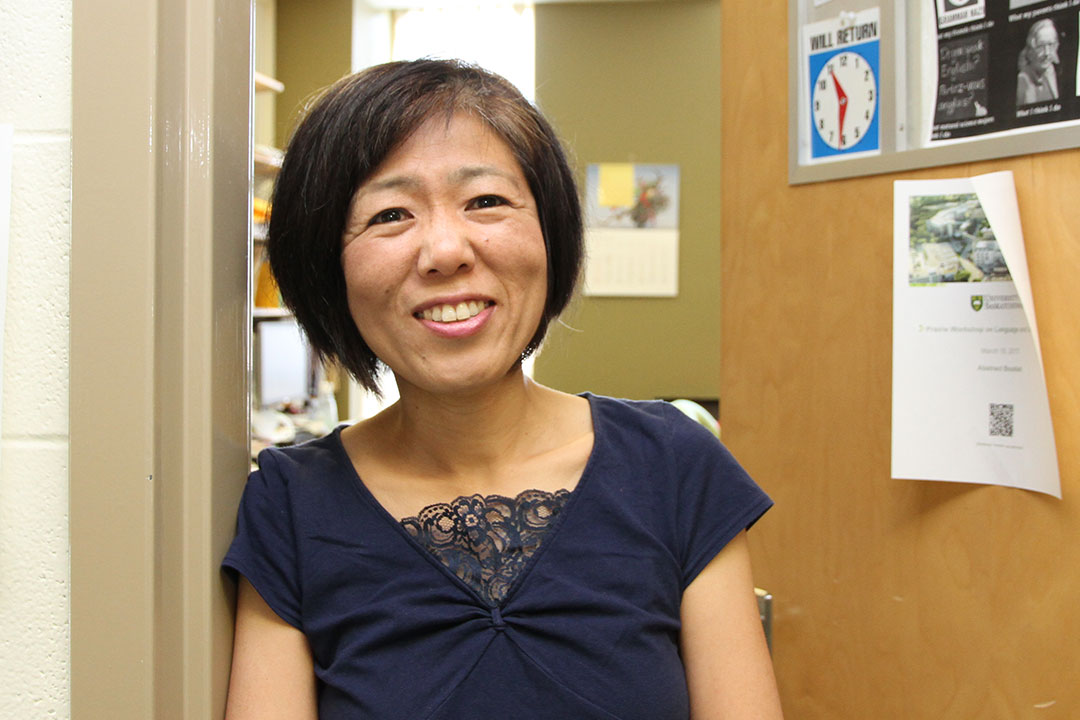
Examining pop culture and cinema in Japan
From its unique animation and comic book styles to cinematic cult classics, Japan has contributed significantly to the world’s canon of popular culture.
By Lesley PorterIzumi Krasznai, a faculty member in the Department of Linguistics and Religious Studies at the University of Saskatchewan, covers the gamut of Japanese cultural icons in her second-year class, now in its third year of instruction.
The class starts off in the 1950s with some context on Tokyo’s most famous giant lizard: Godzilla.
“The first Godzilla was a very serious movie,” she explained, as it debuted less than a decade after the atomic bombings of Hiroshima and Nagasaki. Additionally, the creature itself was born from a nuclear attack, so “when people watch that movie, they reflect on the scars of the bombing.”
Monsters and mythical creatures are a constant theme in Japanese cinema and media, explained Krasznai. However, they don’t have the same connotation as they do in North America, and are used more as educational devices or depictions of nature.
“Monsters can be scary but also kind of good,” she said.
One example is that of Totoro, a large forest spirit from the film My Neighbor Totoro by renowned director and animator Hayao Miyazaki. Despite his size and ominous roar, Totoro acts as a gentle giant to the two young female protagonists in the film.
“Totoro is actually a monster, but he’s nice,” said Krasznai. “Miyazaki used a lot of these ideas in his animation.”
Another director known in the monster genre is Shigeru Mizuki, who represented the creatures as part of Japanese folklore. Because of his animation, “a lot of kids aren’t too scared of monsters and instead treat them like friends,” added Krasznai.
Of course, a class about Japanese culture isn’t complete without a section on anime, the distinct animation style known for its complex plots, exaggerated physical features and painstaking details. One director of note covered is Osamu Tezuka, whose work is considered as prolific as Walt Disney’s and is regarded by many as the God of Manga.
Most notably, Tezuka created a manga (comic book) character named Astro Boy in 1952. It was adapted into an animated program in 1963, becoming Japan’s first animated television series and paving the way for the modern anime aesthetic.
“A lot of students didn’t know that,” Krasznai said with a laugh.
“He totally changed people’s image of manga and animation,” said Krasznai. “Animation is regarded as kid’s stuff, but he made a lot of entertainment—for girls, boys, samurai, science fiction.”
Other themes in the class that are identified in the films include the representation of family life, education, and traditional and religious customs, such as funerals.
Krasznai, who was born and raised in Japan, travelled the world teaching Japanese before moving to Saskatoon. In addition to this course, she teaches Japanese language classes in the College of Arts and Science. Many of her students take both concurrently, which provides a benefit.
“It’s a good way to listen to Japanese, while also watching the movies,” she said.
Enrolment for the class has been steady since its inception, she explained, and students are keen to learn more about cultural products that have had such a profound impact. In turn, she hopes exposing the students to new ideas, cultural figures and media helps them to further appreciate other forms of pop culture—in Japan and beyond.
“I want them to build their ideas more and expand their interests,” she said. “We don’t have a big Japanese community [in Saskatoon], or much contact with Japan, so the classroom plays that kind of role.”

